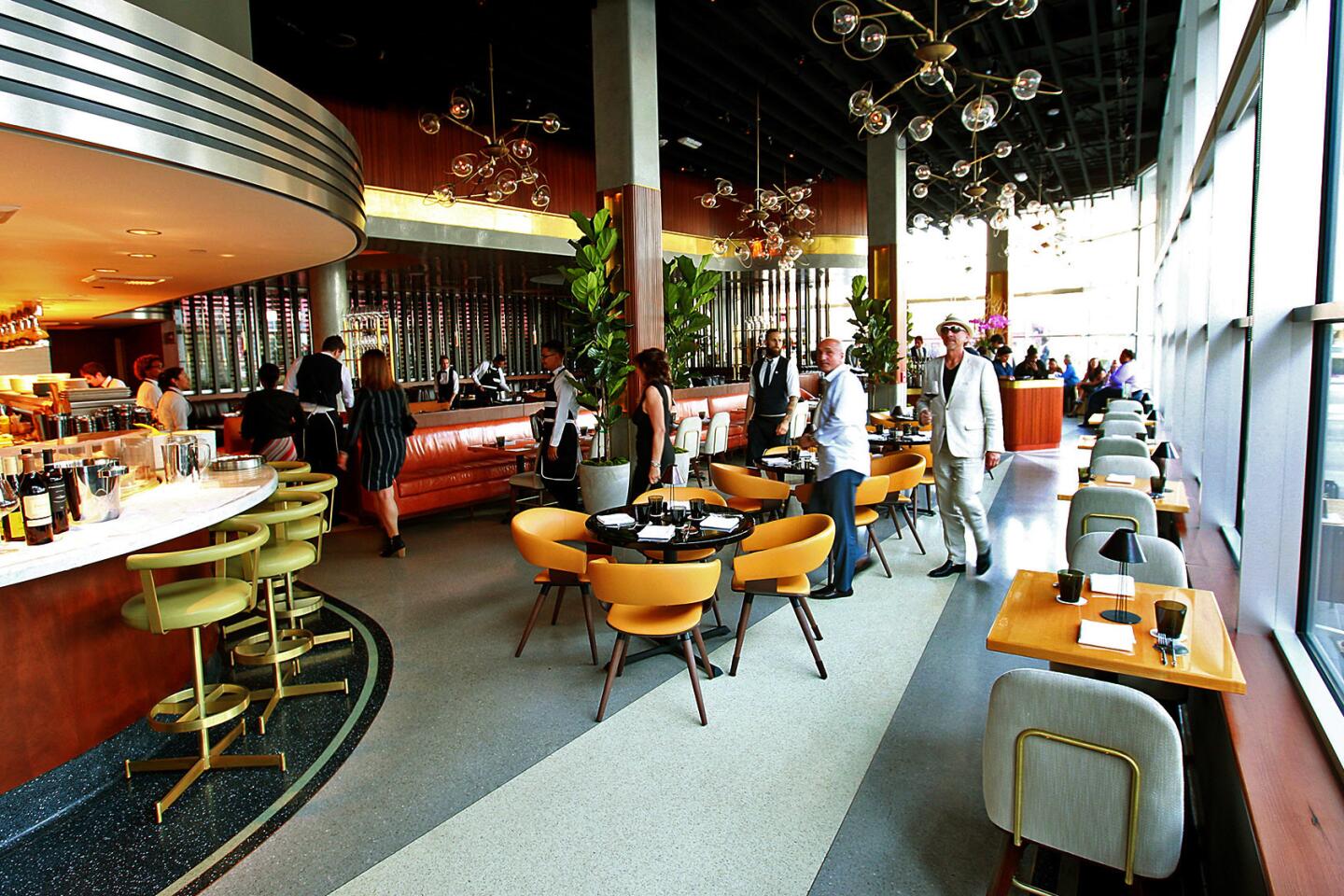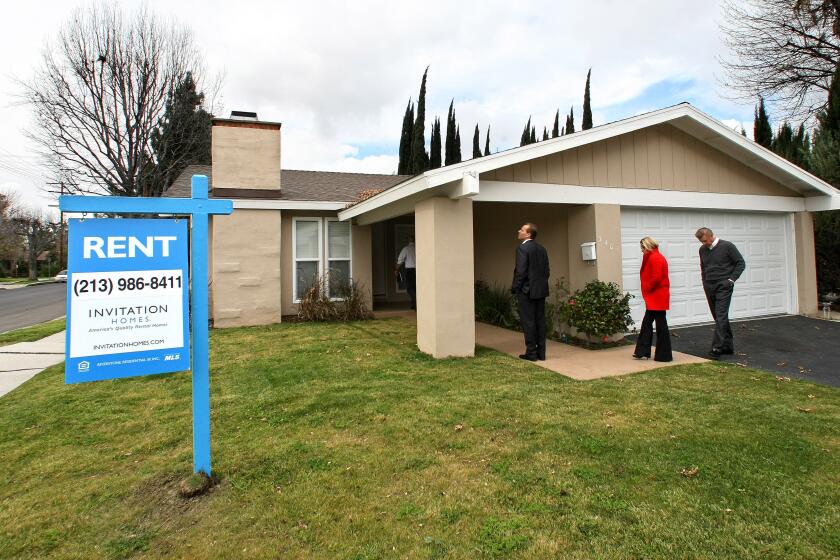Neighborhood Spotlight: Hollywood throws itself into its newest role
Drivers on the Hollywood Freeway where it emerges from the Cahuenga Pass and curves along the northern edge of Tinseltown are treated to a spectacular view of a skyline that for decades remained frozen in time.
Now, 30 years after the launch of a redevelopment effort aimed at bringing the spiritual heart of Los Angeles back, that skyline is changing at breakneck speed as new buildings clamber skyward. This explosive resurgence is just the latest reinvention of a community that has adapted itself to the demand of its times over and over again.
In the beginning, it was all farmland, set on the remnants of the old Spanish ranchos of La Brea and Los Feliz. In the early 1900s, it became a retreat for well-to-do Midwesterners, whose country homes lined Prospect Avenue. Soon the motion-picture production industry followed, the stately homes and pepper trees made way for commercial buildings, and Prospect Avenue became Hollywood Boulevard.
Movie studios sprang up on Sunset, Gower and Melrose, while radio studios clustered along the Vine Street corridor; the TV studios would would eventually join them. It was a company town. And then the company left town.
All the major studios except for Paramount eventually decamped for the Valley or the Westside. The rise of the DJ meant that the large studios necessary for live radio performances were now obsolete. On the TV side, it was the opposite: More complex filmed programs needed larger studio spaces. The premieres at the Chinese Theater continued, but the Brown Derby closed, and even the Oscars left town in 1961. The Golden Age of classic Hollywood was over.
Hollywood’s decline became so pronounced that the city set up redevelopment efforts that would set the stage for today’s renaissance. An act of God also contributed: After a methane explosion at the Ross Dress for Less in the Miracle Mile, the Red Line subway was rerouted through Hollywood to avoid the pockets of gas below Wilshire Boulevard. That alignment would allow planners to provide incentives for developers to build dense projects near Hollywood’s three new subway stations.
The plan kicked into high gear with the Hollywood & Highland complex, where the Oscars would make their return to Hollywood, and has continued with a boom in hotel, apartment and creative space construction. The industry that takes its name from the neighborhood has also made a comeback here: Netflix has signed a lease in a new office tower on Sunset, and Viacom has moved into the newly renovated Columbia Square (once the home of CBS Radio). It may not quite be a new Golden Age, but it’s a pretty decent next act.
Neighborhood highlights
Boom times: It can be an exciting time to live in Hollywood, as the neighborhood transforms into a dense, transit-oriented urban neighborhood.
History you can touch (and taste): From the forecourt of the Chinese Theater to the martinis at Musso & Frank, among all the changes there are still plenty of places where you can commune with the spirits of Hollywood past.
Neighborhood challenges
Not-in-my-historically-important-backyard: Where one person sees exciting boom times, another sees a threat to an old way of life, and so Hollywood has become the epicenter of L.A.’s latest NIMBY movement. Whichever way the vote goes on the anti-development measure on next year’s ballot, it’s unlikely the controversy will be settled once and for all.
Expert insight
Paul Wylie, president and broker of LAMERICA Real Estate, is a former Hollywood resident and business owner who has seen the area improve dramatically in recent years.
“[Hollywood] used to be a very secondary choice for people, despite being centrally located,” said Wylie, who lived there during the 1970s and ’80s. “It was a struggling area back then, but now you are seeing more families, more children, more restaurants.”
Wylie points to improvements in the public school system as one of the area’s draws. Gardner Street Elementary, he said, has seen its reputation improve immensely over the last three years.
Market snapshot
In October, based on two sales, the median price for single-family homes in the 90028 ZIP Code was $579,000, down 31.9% year over year, according to CoreLogic. The median sale price for condominiums, based on two sales, was $643,000.
Report card
Within the boundaries of Hollywood is Gardner Street Elementary, which scored 863 out of 1,000 in the 2013 Academic Performance Index. Selma Avenue Elementary had a score of 790, and Vine Street Elementary scored 736. Hubert Howe Bancroft Middle and Joseph Le Conte Middle scored 764 and 765, respectively. Hollywood Senior High had a score of 762, and Helen Bernstein High scored 634.
Sign up for Essential California
The most important California stories and recommendations in your inbox every morning.
You may occasionally receive promotional content from the Los Angeles Times.








